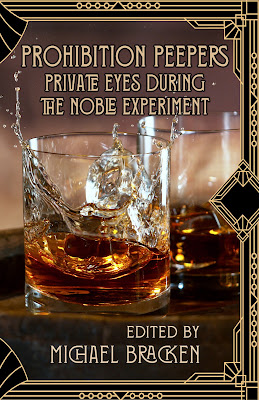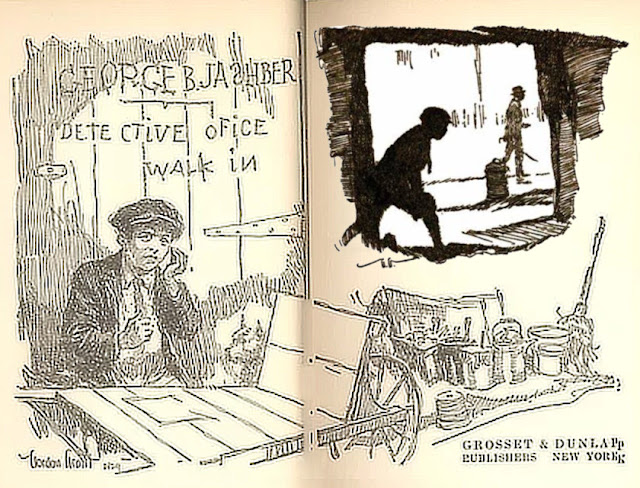 |
| Gorgeous cover! |
A new Michael Bracken anthology has just launched, Prohibition Peepers. In coming weeks, I intend to blab incessantly about it.
My story, ‘Dime Detective’, features a slightly atypical private detective in the final days of 1932. After civilization had been drawn into WW-I (1914-1918), North Americans were hit with the Spanish Flu pandemic (1918-1920). Morals activists turned the temperance movement into a national-forced abstinence mandate, resulting in the Volstead Act and 18th Amendment, banning drinkable alcohol.
God wasn’t finished with America. The Great Depression set in (1929-1939), overlapping Prohibition (1920-1933), the Dustbowl (1931-1940), and the build-up to WW-II (1939-1945). Those twenty-five years (1914-1939) leading up to the Second World War were rough, but in some ways, the 1930s remains one of my favorite eras.
Sparked in the 1920s, musical creativity exploded in the following decade with the swing era, the landscape of the big bands. That music sticks with us today, works such as Louis Prima’s ‘Sing! Sing! Sing!’ (1936), famously covered by Benny Goodman (1937) with Gene Krupa and Harry James. Japanese love that piece. Few people today know Glenn Miller’s famous ‘In the Mood’ (1939) originally began life as ‘Tar Paper Stomp’ (1930) by Wingy Manone, which spawned numerous spin-offs. Louis Armstrong, Duke Ellington, Lionel Hampton, Count Basie, the Dorsey brothers, and Cab Calloway, not to mention wah-wah specialist Clyde McCoy. What an era!
Mechanical beauty: The late 1920s and 1930s saw some of the most beautiful motorcars ever built. Packard, Bugatti, Mercedes SSK, Bentley, and the ACD group– Auburn, Cord, and Duesenberg, combined sweeping form with function.
And of course it was an era hard-boiled noire and mystery lovers revere.
 |
| Booth Tarkington |
Most Famous Novelist Unknown Today
Generations X, Y, Z can’t be criticized when the most famous author of the 1920-30s, Booth Tarkington (1869-1946), descended into oblivion after his death. He is one of only four novelists to win multiple Pulitzer Prizes for Fiction (along with William Faulkner, John Updike, and Colson Whitehead). His best known work, The Magnificent Ambersons, (1918) won the 1919 Pulitzer, and was made into movies at least three times, one directed by Orson Welles.
Considered the most important author of his time with a number of works turned into films, Tarkington, along with James Whitcomb Riley, Meredith Nicholson, and George Ade, formed what has been described as an Indiana Golden Age of literature, only to fade into obscurity with the advent of WW-II.
The author created an inverse image of the infamous George Amberson Minafer in a 11-year-old boy named Penrod. His friends group is multiracial, certain to get Penrod books banned and burned in Florida schools. The choice of names was fraught: Sam, Herman, and Verman, a nickname to arouse the ire. Tarkington couldn't foresee his vision of an expanded racial universe could be tarnished by a careless, offhand choice of nicknames.
Penrod is a cross between Tom Sawyer and Dennis the Menace, who, along with his pals, might have influenced the Little Rascals / Our Gang franchise. As a book-devouring child chomping through our thin school library, I discovered the series: Penrod, Penrod and Sam, and Penrod Jashber. The first two books were mostly short stories, the third more of a novel. The latter featured him playing private detective.
Is there any wonder I thought of Penrod when Michael asked us to write a private eye story in the prohibition time frame?
In my story, Penrod Jasper (the surname comes from my grandfather) is twelve as is Sam… actually Samantha. She has a touch of my niece and I fell in love with her. She’s outspoken, trusting, fearless, and won’t back down for any reason. I’m also fond of one of my gangsters, a hulking, not-so-bright muscle named Ferd. And there’s Queenie… Discover them for yourself.
Enscribed in Black and White
I had the opportunity to read a few stories prior to publication and one unintended factor struck me– this book will be banned in Florida. Each story I read, mine included, dealt with not merely race relations, but race and relations.
I interpret it as our small way of telling rising racial supremacists that we reject their world. Most of us want to live and love in peace and prosperity, kindness and consideration.
In future articles, I’ll be talking about the following:
| © 2023 Prohibition Peepers |
||

Hope they fixed the typo on the cover before publication!
ReplyDeleteYikes!
DeleteIndeed, you sharp-eyed reader, the typo was corrected long ago. Apparently I still had a first 0.1 draft hanging around and grabbed the wrong file, long since corrected. I (and some others) were so dazzled by the cover, the spelling slipped by. How embarrassing and thanks for the catch.
Now for lunch in my Fortress of Mortification: I'm having chasten tea, settled hash and humble pie.
But truly, the artist created a magnificent art deco cover. I love it.
Drat! This is my period (The Merry Widow Murders takes place in 1928, and the next two in 1929). How did I miss this anthology call? Will definitely download it!
ReplyDeleteMelodie, if your widow wants to meet a couple of truant children, she now knows where to call. I hope she likes the story!
DeleteLeigh, I'm abashed that I've never read any Tarkington. I'll have to check him out. I agree about the between wars period as a great fertile period for all the arts: writing, film, architecture, art, and certainly the music. I love early jazz and swing bands, probably something I picked up from my parents.
ReplyDeleteIt's a thrill to be in the Prohibition Peepers collection with so many writers I admire. Thanks for the shout out in your promo video, too.
You're welcome, Steve. Wire services are a handy thing!
DeleteSpeaking of early jazz and 'handy', my mother wrote W.C. Handy for autographs for my brother and me. I think it survived the hurricanes.
I saw Welles' movie a million years ago and remember nothing except that Joseph Cotton was in it. (Wasn't he?) I had heard of Penrod, but that's it. Thanks for filling me in. I don't mean to be a pedant but could you explain this sentence: " His best and bi-racial friends were Sam, Herman, and Verman, a nickname to arouse the ire and simultaneously be banned and burned in Florida." Is the nickname banned or...? I look forward to reading the anthology.
ReplyDeleteHow badly can a person butcher one sentence? Very badly indeed.
DeleteI was attempting to convey that the Penrod stories had two opposing issues working against them.
(1) Florida’s governor has become notoriously touchy (read: racist) about Black folks in film and print. His schoolboard toadies wouldn't abide Penrod’s friendship and they'd become absolutely apoplectic reading our anthology.
The other day, I was discussing the book, Black Like Me, our high school reading assignment. Assignment for us, abomination for today’s children. Any kid knows we’re headed in the wrong direction.
(2) One of the children is named or nicknamed Verman. I can’t imagine that flying today, although my Dad used to collectively call us brats ‘vermin’. “Do you wee vermin know anything about the broken cookie jar?” Although our father treated the word affectionately rather than pejoratively (possibly a phrase of the era), this circumstances aren’t the same. It certainly stings my ears and I can understand parents saying, “Whoa, wait,” while ignoring Tarkington was portraying a world, liberal for the era, in which children could play together regardless of epidermal pigment.
My story deals with name-calling. I’m curious what you think about it.
I also missed that anthology call.
ReplyDeleteOne of my favorite time periods
especially with my cousin Clyde
Barrow roaming around north
Texas. Curses & Drat.
And Leigh I love the SSayers
radio. It's priceless.
I'm pleased you enjoyed it, Jan. It was fun.
DeleteI recall your mentioning Clyde Barrow before. In my research, I came across a photo of Bonnie. I couldn't tell for sure, but she looked like she was smoking a cigar. Didn't she know those things could kill her?
Congratulations, Leigh, and to all who are in the anthology! It is amazing how quickly some people fall into obscurity. I don't think that many people read Dos Passos, either.
ReplyDeleteJames Oliver Curwood comes to mind, Eve. In my research on Tarkington, a sociologist posited that authors wildly popular in their own time were often unlikely to have fame after their era. Twain, often compared to Tarkington, is one exception.
Delete